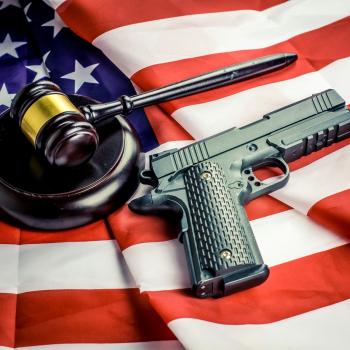Two years ago the community choir I sing with in Toronto put on a concert devoted entirely to music by African-American and African-Canadian choral composers. We performed a lot of great music in that concert, much of it drawing on the tradition of African-American spirituals. For me, the most powerful piece was “Crucifixion” by Adolphus Hailstork. The refrain is powerful: “They crucified my Lord / And he never said a mumbling word…They pierced him in the side / They nailed him to a tree / And he never said a mumbling word.”
However, as soon as we began rehearsing the piece, murmurs of discomfort could be heard throughout the choir. A newcomer to Univox, I soon learned that a good percentage of our choristers are Jewish, and some of them felt uncomfortable with these words. At some point in their lives, most of them had encountered the inane accusation that “the Jews killed Jesus,” a charge that has been used to justify anti-Semitism for centuries. I learned that for some Jews, Christian Holy Week and Easter are a source of regular discomfort and dread. A serious conversation ensued about the damages wrought by our human propensity to speak in the rhetoric of “us” and “them.” After some deliberation, our director opted to alter the words of the song; the phrase “they crucified my Lord,” was rewritten as “was crucified my Lord.”
I applaud our director for making this decision. However, on this Good Friday two years later, I am thinking that from a Christian perspective, there might be an even better revision to this phrase. “We crucified our Lord” would be much more apt. There is a reason why, when we hear the reading of the Passion on Palm Sunday, the congregation takes on the role of the crowd. Ultimately, we are the crowd. We are the high priests and the Pharisees; we are Pontius Pilate; we are the confused, erratic public who, just a few days after welcoming Jesus into Jerusalem, passively take in the spectacle of his crucifixion.
If I view history from a Christian perspective, I believe that we were crucifying Jesus for millennia before that fateful Friday afternoon, ever since we first learned to fashion weapons and turn against one another in malice and violence. Unfortunately, we have continued to crucify him for two millennia since he willingly offered his life for us. In the Crusades and the Inquisition, the Middle Passage and the Holocaust and the Dirty War – we continue to crucify our Lord, again and again. Every day, Christ’s Passion is played out in our ongoing exploitation of those weaker than us – whether other human beings, the animals whom we feel justified in harming for our own convenience, and also the non-sentient living things exploited as mere resources for our ongoing project of “development” which effectively entails destruction of the natural world. But as we look at all of this cruelty and destruction, I fear there is no “they” we can point our fingers at – whether government, big business, terrorists or anyone else. Sadly, we are all implicated in the evils plaguing our world.
However, we know that there is another side to the Good Friday story. Listening to the Passion, we hear of those who stood passively as Jesus was crucified; we cannot forget the disciples, who ran away in fear. But, there was also Simon who helped him carry his cross; there were the women of Jerusalem who wept for him; there was Joseph of Arimathea, who donated his own tomb of Jesus’ burial. We are presented with the apostle John, who stood by Jesus to the end, and of course the Blessed Mother Mary, who bravely endured one of the worst experiences any parent ever has to face – the death of a child. Then, there were all of those people who remembered the promise that Jesus had made – to rebuild the temple in three days. Though filled with fear, those closest to Jesus surely did not forget those words. They looked to the future with faith, knowing that while evil is real, goodness ultimately triumphs.
As we commemmorate Christ’s Passion year after year, it is easy to lose sight of the fact that this is an ongoing, continuously unfolding story. I’ve often struggled to imagine the agony that Jesus experienced while praying in the garden of Gethsemane. He knew what he was being called to do – to assume the weight of human sinfulness, to sacrifice his life for our salvation. Could he have imagined the ongoing depth of that sinfulness? Could he possibly have envisioned the machine gun and the atomic bomb, the abortion clinic and the factory farm? Did he know what terrible things we would do to the world, sometimes in his very name?
In spite of everything, we Christians profess the Resurrection, the ultimate triumph of mercy and love over cruelty and callousness. We know that we are sinners; we know that, time and again, we will crucify our Lord. But, as people of faith and hope, we know that we are more than spectators of violence; we are more than a fickle crowd. We refuse to believe that there is no escape from this cycle of destruction, for we hold a view of salvation history that envisions Christ’s triumphal return, that fateful moment when peace, justice and love will truly prevail. As we look forward to Easter, may we do all we can to be Simon and Mary rather than the high priests or Pontius Pilate; may we never turn from the endless mercy of Jesus who, every good Friday, reminds us in the most dramatic way of his great love.












